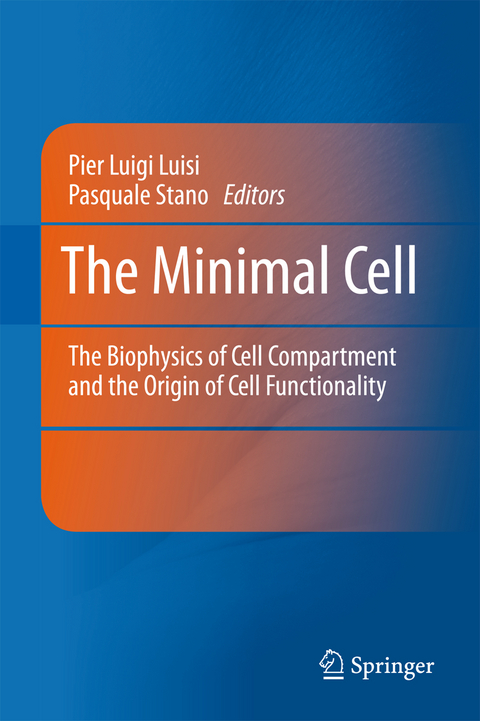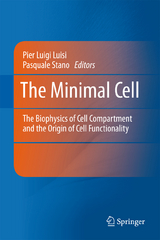The Minimal Cell
Foreword, Pier Luigi Luisi.- Part I The Physical Aspects: 1 Towards a minimal cytoplasm, Jacqueline D. Keighron and Christine D. Keating.- 2 Evolution of the cell’s mechanical design, David Boal and Cameron Forde.- 3 On the minimal requirements for the emergence of cellular crowding, Luis Acerenza and Martín Graña.- 4 How small is small? A biophysical chemists thoughts about the lower limits of cell sizes, Peter B. Moore.- 5 Biochemical reactions in the crowded and confined physiological environment: Physical chemistry meets synthetic biology, Allen P. Minton and Germán Rivas-Caballero.- Part II Steps towards Functionality: 6 The influence of environment and metabolic capacity on the size of a microorganism, W. Andrew Lancaster and Michael W. W. Adams.- 7 The minimal cell and life’s origin: Role of water and aqueous interfaces, Gerald H. Pollack, Xavier Figueroa and Qing Zhao.- 8 Membrane self-assembly processes: Steps towards the first cellular life, Pierre-Alain Monnard and David W. Deamer.- 9 Approaches to building chemical cells/chells: Examples of relevant mechanistic ‘couples’, Paul M. Gardner and Benjamin G. Davis.- Part III Steps towards Minimal Life: 10 Construction of an in vitro model of a living cellular system, Kenichi Yoshikawa, Shin-ichiro M. Nomura, Kanta Tsumoto, Kingo Takiguchi.- 11 New and unexpected insights on the formation of protocells from a synthetic biology approach: The case of entrapment of biomacromolecules and protein synthesis inside vesicles, Pasquale Stano, Tereza Pereira de Souza, Matteo Allegretti, Yutetsu Kuruma, Pier Luigi Luisi.- 12 Liposomes mediated synthesis of membrane proteins, Yutetsu Kuruma.- 13 Giant unilamellar vesicles: From minimal membrane systems to minimal cells?, Petra Schwille.- 14 Theoretical approaches to ribocell modeling, Fabio Mavelli.- 15 Evolvability and self-replication of genetic information in liposomes, Tetsuya Yomo, Tomoaki Matsuura, Norikazu Ichihashi, TakeshiSunami, Hiroshi Kita, Hiroaki Suzuki.- Index.
| Erscheint lt. Verlag | 3.11.2010 |
|---|---|
| Zusatzinfo | X, 298 p. |
| Verlagsort | Dordrecht |
| Sprache | englisch |
| Maße | 155 x 235 mm |
| Themenwelt | Studium ► 2. Studienabschnitt (Klinik) ► Humangenetik |
| Naturwissenschaften ► Biologie ► Zellbiologie | |
| Technik ► Umwelttechnik / Biotechnologie | |
| ISBN-10 | 90-481-9943-3 / 9048199433 |
| ISBN-13 | 978-90-481-9943-3 / 9789048199433 |
| Zustand | Neuware |
| Haben Sie eine Frage zum Produkt? |
aus dem Bereich




